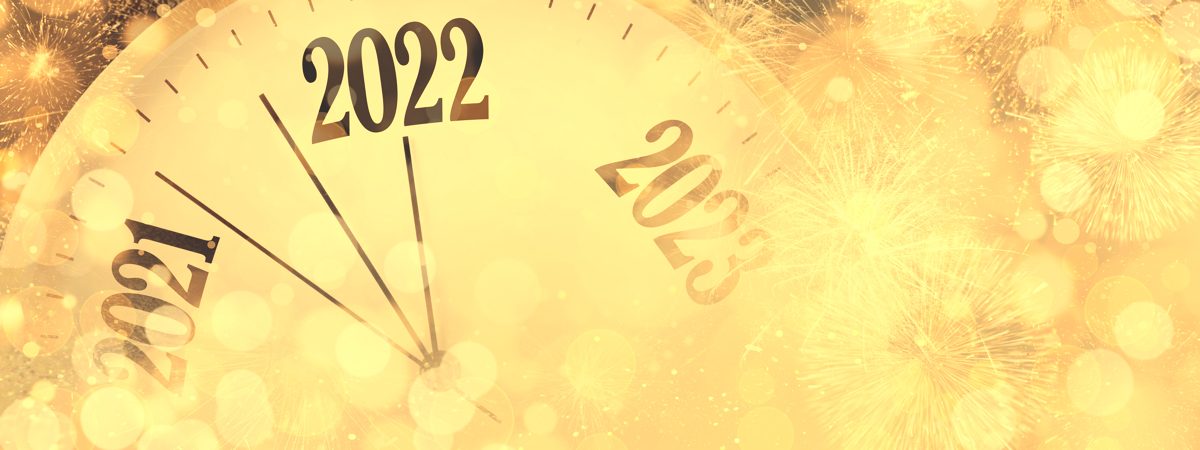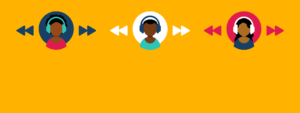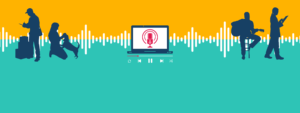It’s been a crazy and a challenging year for audio.
Dampened by recession fears, radio revenues have been slow to return as we emerge from the pandemic. Podcast ad dollars are still growing, yet the need for some podcast companies to scale back their grand ambitions has led to some layoffs.
One of the fortunate things about doing research is that we often get a chance to set these short-term business issues aside and focus on the opportunities provided by the most important player in all of this: the listener. After all, their reality – how and why they listen – will determine the future of the industry.
Here are three pieces of learning from our listener research over the past year that we see having an impact as we move into 2023 and beyond:
1. Like it or not, video is a big part of the podcast experience for many listeners.
YouTube is firmly established as a leading podcast platform. In our most recent national studies in both the US and Canada, YouTube has either a slim lead for #1 or ties for #1 with Spotify as the platform monthly listeners say they use most often to access podcasts. Nearly 3-in-10 (28%) of listeners in both Triton Digital’s Podcast Metrics Demos+ study in the US and The Canadian Podcast Listener 2022 name YouTube as the platform they use most often.
It’s not that YouTube users always watch the podcasts they access on YouTube. In fact, on average, YouTube users say that 43% of the time they access podcasts on YouTube they are listening to them, not watching them (Cumulus Media and Signal Hill Insights’ Podcast Download Fall 2022 Report).
More to the point, given the choice, most podcast listeners like to have a video option available to them. In the same Fall Download study, nearly 6-in-10 (57%) of all weekly podcast listeners say they prefer podcasts they can either watch actively (28%) or has video they can play in the background or minimize (29%). That’s the reality that both Spotify and Apple must have had in mind when they recently launched their own video capabilities.
Clearly, not all podcasts easily lend themselves to video. Audio-only listeners are more likely to favour narrative genres like True Crime, while listeners who prefer to actively watch video lean towards Comedy or Music.
2. Broadcast radio serves different needs from other audio, and that opens windows of opportunity.
The audio landscape has become increasingly competitive over the past 25 years.
Wind the clock back to 1997 and you had basically two audio options: broadcast radio and your personal music collection. Today, you have broadcast radio and music streaming, podcasts, satellite radio and still your personal music collection. Yet most broadcast radio stations still use basically the same playbook they did 25 years ago.
We’ve been looking into this in our research over the past couple of years, asking listeners about the different need-states served by various types of audio, and seeing some patterns that point to how radio can find a unique value proposition in what is now a more crowded marketplace. The formula would vary by format or station but, at the heart of it, it relies on what listeners say sets radio apart – Connection, companionship and information – while still competing in its own way for entertainment.
There are also sales opportunities. Radiocentre in the UK has been researching audio need-states since 2014 and just released a new report showing how advertisers can take advantage of these need-states to develop more effective audio advertising campaigns.
3. Many podcast listeners come to podcasting to learn something new, but the individual podcasts they choose to listen to are typically the ones they find entertaining.
One of the key findings from our need-states research is that podcasting stands above other audio types for satisfying listeners’ curiosity, helping them learn something new.
It’s what brings many listeners to the medium. However, when we dug into the data from the studies we have done testing the appeal of individual podcasts, we saw a different picture. Aggregating data across multiple podcasts, the #1 driver of appeal was not whether listeners learned something new from the podcast, but whether they found it entertaining.
It makes sense when you think about it. You may listen to podcasts to learn about becoming an entrepreneur but, faced with the choice of thousands of podcasts on entrepreneurship, you probably end up sticking with the one that’s most entertaining.
Looking Ahead…
We look forward to taking a close look at other big picture issues and opportunities in our 2023 audio research.
And we’re open to ideas. It could be a new frontier for podcast advertising or learning more about a radio station that’s blazing a new trail to success. Reach out and let us know what you’d like to find out and we’ll add it to our list.




